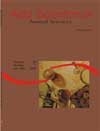<b>Variability evaluation of G<sub>o</sub> and F<sub>1</sub> generations of GIFT Nile tilapia strain (<em>Oreochromis niloticus</em>) by RAPD</b> - DOI: 10.4025/actascianimsci.v30i2.4708
Keywords:
Shannon index, cultivated generations, genetic divergence, genetic variability
Abstract
This study had as objective to analyze, by RAPD technique, the genetic variability and divergence of two GIFT Nile tilapia strain generations. Parameters were estimated for breeders (Go) and offspring (F1). The genetic variability was determined by the polymorphic loci percentage and Shannon index. The polymorphic loci percentages were 69.6% (Go) and 60.0% (F1). The Shannon index values were 0.367 for the Go generation and 0.317 for F1. Genetic divergence values, calculated using the Mantel test, were 0.213 for Go and 0.208 for the F1 generation. The results indicated that there was a genetic variability loss from the Go to F1 generation. However, it is important to observe the high genetic variability found for both the Go and F1 generations, which is a fundamental characteristic in order to obtain gains in breeding programs. The data also indicated that the genetic status is favorable to the continuing of the GIFT improvement program in Paraná State.Downloads
Download data is not yet available.
Published
2008-08-07
How to Cite
Lupchinski Junior, E., Vargas, L., Povh, J. A., Ribeiro, R. P., Mangolin, C. A., & Barrero, N. M. L. (2008). <b>Variability evaluation of G<sub>o</sub> and F<sub>1</sub> generations of GIFT Nile tilapia strain (<em>Oreochromis niloticus</em>) by RAPD</b> - DOI: 10.4025/actascianimsci.v30i2.4708. Acta Scientiarum. Animal Sciences, 30(2), 233-240. https://doi.org/10.4025/actascianimsci.v30i2.4708
Issue
Section
Animal Breeding and Reproduction
DECLARATION OF ORIGINALITY AND COPYRIGHTS
- I Declare that current article is original and has not been submitted for publication, in part or in whole, to any other national or international journal.
The copyrights belong exclusively to the authors. Published content is licensed under Creative Commons Attribution 4.0 (CC BY 4.0) guidelines, which allows sharing (copy and distribution of the material in any medium or format) and adaptation (remix, transform, and build upon the material) for any purpose, even commercially, under the terms of attribution.
Read this link for further information on how to use CC BY 4.0 properly.
0.9
2019CiteScore
29th percentile
Powered by 








































